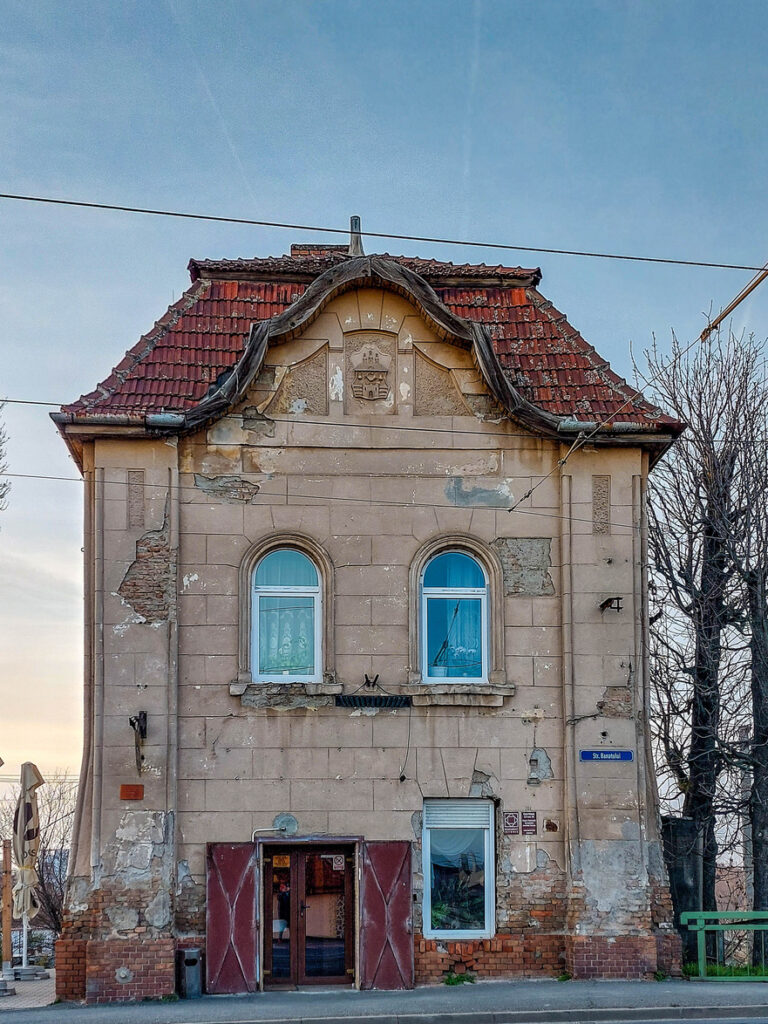
Address: 2 Banatului Street, 310 250
Dates from: 1907
Architectural style: Secession
Current role: cafe
Can be visited: yes
Other sights in the area: the Traian Bridge (1913), Mureș Floodplains Natural Park
This vantage point holds special significance, since it overlooks the location of a former Ottoman fortress, which was once erected on the other side of the Mureș River after 1551, when the city was occupied by the Ottomans. Until the end of the 17th century, the river represented a natural border between the Ottoman Empire and the Habsburg Empire. The old Ottoman fortress was torn down by the Austrians, who built a new fortress in order to defend their position.
Over the 19th and 20th centuries, Arad was considered to be one of the most important economic hubs in the region, both due to its strategic location, as well as due to the intense industrial & economic activity – this included more than 4000 commercial enterprises, according to 1937 statistics.
The Old Customs House found near the entry point of the Traian Bridge (formerly known as Grof Karoly Bridge) dates from 1907. Every merchant crossing the Mureș River needed to pay custom fees before bringing any goods to the city of Arad, either from other parts of the Banat region, or towards other regions of what was then the Austro-Hungarian Empire. This took place even before the bridge was built, when the river was the preferred way of transporting different types of wares. The most important commodities passing through the customs were various kinds of fruits, wood and wood products, as well as salt.
The Customs House, built in the Secession style, still holds the Arad City coat of arms, depicting symbols of the three church towers, the citadel, an arm holding a sword, as well as the Mureș River. Currently, it is open as a cafe, which can be visited during opening hours.
